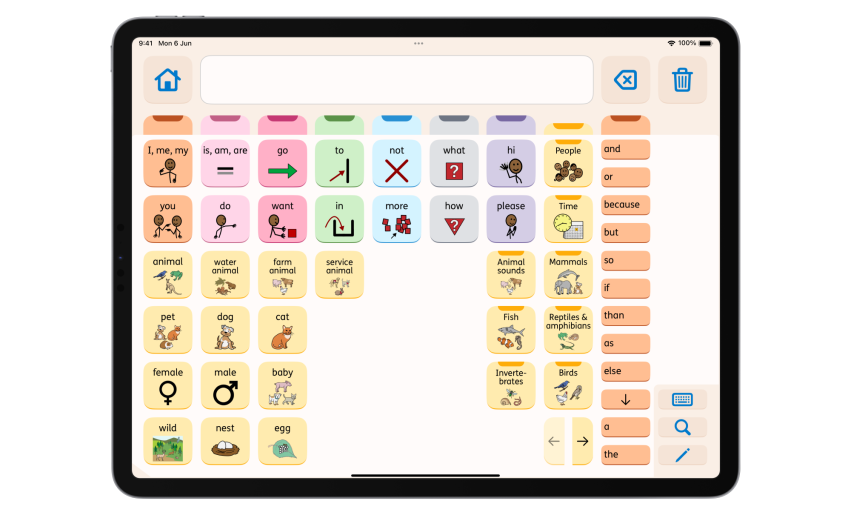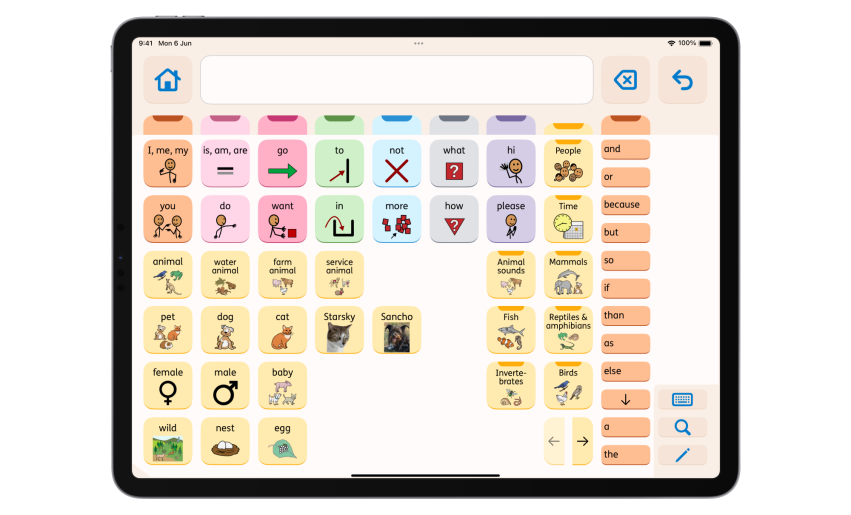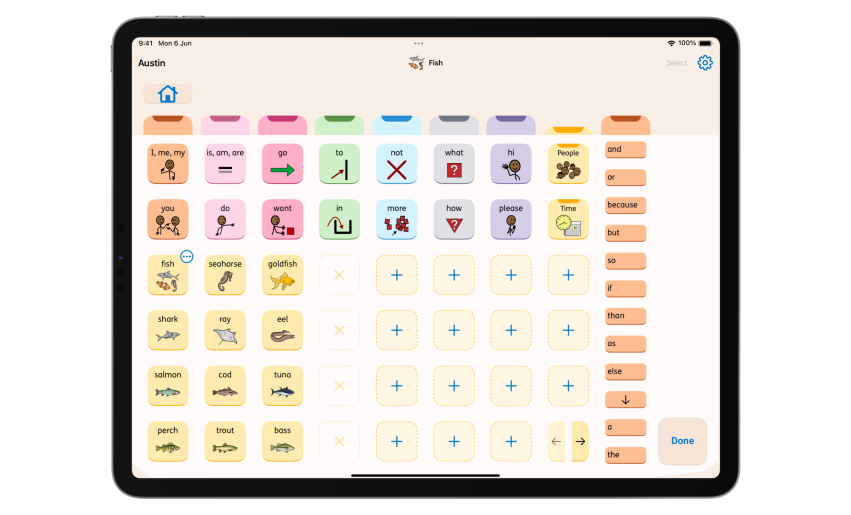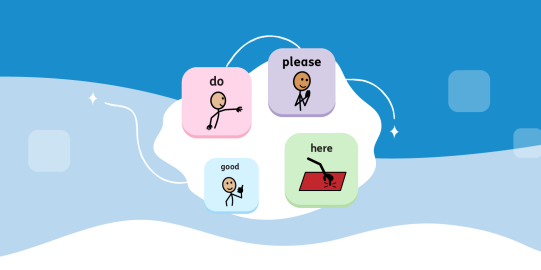Proloquo has a robust vocabulary that sorts fringe words into categories. For example, common first words like dog and mom are sorted into categories (folders) like Animals and People. However, many emergent AAC users do not yet understand the concept of categories. For example, they may know the word dog but not yet understand that a dog is an animal. Fortunately, Proloquo is explicitly designed to help children learn both words and categories. This article describes how children learn categories and how you can use Proloquo to teach them.
Learning words
Children learn the concept of categories as they learn new words. Learning words and developing language is a process of learning what a word means and what it doesn’t. Part of that process is learning what groups the word might belong to.
For example, some common first words are mom and dog. Children first learn mom as their mom and dog as their dog or one particular dog. Over time, their understanding grows from specific to more general as they try to figure out what all moms or all dogs have in common. They might overgeneralize, calling all animals with 4 legs dog or all women mom. They might under-generalize, by focusing only on specific characteristics, such as only recognizing dogs if they are walking on a leash. The words children use reflect what they know about the words themselves. Their words show us how they are searching for patterns and commonalities to understand word meanings, such as when a 4-legged creature is a dog vs. when it is a cat. They are also searching for these patterns to apply context, such as knowing when something is big vs. when it is small. After all, a baby is small, but compared to a puppy, it is big! A dog can be big, but compared to a house, it is small.
Learning categories
In a way, even common simple words (like mom and dog) are a category because they represent a general concept. Learning about words is a process of associating many ideas and characteristics with that concept.
Over time, through interaction and experience with words and others, children learn how things can be put in groups. They learn that moms are a type of people. They learn that dads, teachers, and sisters are also types of people. They learn that dogs are animals, but not all animals are dogs. Children learn to do this by comparing and contrasting examples and non-examples of each group as they try to decipher what essential qualities make something a dog vs. a cat or a mom vs. a dad.








